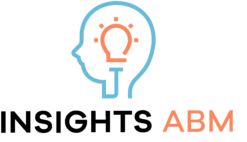Conversion Rate Optimization for Beginners
There is a good chance that your current digital marketing efforts are focused on generating leads and increasing web traffic. While these are important aspects of growing your business, you may still be overlooking an essential practice known as conversion rate optimization (CRO).
When it is leveraged properly, CRO can open the door for unprecedented growth for your business. You can get the most out of every lead and increase revenue.
In order to help, Insights ABM has created this beginner’s guide to CRO. As a conversion optimization agency that specializes in making brands grow, we know what it takes!
Read on to find out how you can achieve sustainable success through the power of CRO.
What is CRO?
Simply put, a conversion occurs when a consumer completes a desired action on your website. Conversions look different, depending on the type of industry that you are involved in.
For example, if you operate an eCommerce store, then a conversion occurs when a consumer makes a purchase. However, if you own a service-related business such as an AC repair company, then sales are not directly the goal of your site. Instead, you will monitor and track each time a customer completes a contact form or calls your office to learn more about your services.
CRO is the practice of improving your conversion rates through proactive strategies. This may include tactics like modifying your landing pages, reworking blog content, and taking actions to improve the user experience.
Since only about one in five businesses are satisfied with their conversion rates, CRO is becoming an increasingly important aspect of digital marketing.
How Does CRO Benefit My Website?
When it is used properly, conversion rate optimization can improve multiple pages of your site. CRO can be used to:
Refine Your Homepage
The homepage of your site is responsible for creating a good first impression with consumers. Your homepage should emphasize actions, like signing up for services, or highlight links to additional product information. You can also leverage a chatbot program to answer common user questions.
Improve the Pricing Page
Your site’s pricing information can close the deal or cause consumers to bounce before they complete a desired action. During the CRO process, you should focus on revamping your pricing page to convert visitors into consumers.
Common features of a great pricing page include intervals (monthly vs. yearly prices), a button to request a quote, and a description of unique features associated with each price point.
If consumers have to dig for information about the costs of your products or services, then your conversion rates will suffer.
Leverage Blogs
Blogs are one of the best — and most underused — conversion tools for your website. You can use blogs to publish relevant and engaging content about your industry. You can also leverage this tool to convert readers into high-quality leads.
There are several ways to accomplish this goal. You can include a call-to-action at the end of your blogs and incorporate links to other pages of your site. Some businesses even encourage readers to acquire a digital guide or eBook in exchange for their email addresses.
Optimize Landing Pages
The core purpose of a landing page is to prompt the visitors to act. Your landing page content should incorporate strong content, videos, and imagery related to the topic.
For instance, if you are creating a landing page for an AC repair service, include an image of a technician fixing an HVAC system. Close out the page with a CTA button or “contact us” form.
Do I Need a Conversion Optimization Agency?
Virtually every business can benefit from a well-designed CRO strategy. You can develop this plan on your own or partner up with a conversion optimization agency. These firms will help you to reduce customer acquisition costs, improve sales, and convert leads.
If you want to get the most out of your CRO campaign, consider working with an experienced digital marketing team.

